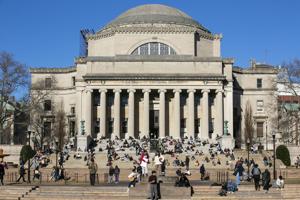The landscape of American higher education has recently been roiled by unprecedented pressure from the Trump administration, which has strategically targeted federal funding for elite universities. This calculated maneuver aimed to reshape academic institutions, alleging ideological biases and demanding concessions from some of the nation’s most prestigious schools in exchange for the release of crucial research grants and financial aid.
Among the first to reach a contentious agreement was Columbia University, which faced federal investigations and subsequently agreed to significant policy overhauls. These included a revamp of its student disciplinary processes and the adoption of a federally backed definition of antisemitism, impacting both teaching practices and a key disciplinary committee. This deal underscored a direct effort by the administration to influence internal university affairs and enforce specific social and political agendas.
Financially, Columbia’s agreement stipulated a substantial payment of $21 million into a compensation fund for employees affected by antisemitism, with the initial federal fine directed to the Treasury Department. Despite these concessions, Columbia asserted that the agreement preserved its institutional independence, explicitly stating that the government lacked authority over its hiring, admissions, or academic speech, a critical clause highlighting ongoing tensions over academic freedom.
Similarly, the University of Pennsylvania found itself in negotiations, modifying school records pertaining to transgender swimmer Lia Thomas as part of resolving a federal civil rights case. This action was aligned with the administration’s broader initiative to address and remove transgender athletes from women’s sports, leading to a freeze on significant federal funding initially withheld from the institution as leverage.
Harvard University also experienced a freeze on billions of dollars in research money, accused by the Trump administration of fostering an environment where antisemitism was allowed to flourish. Despite legal challenges mounted by Harvard to reclaim the lost grants, the administration continued its aggressive stance, reflecting a broader pattern of using financial leverage to effect changes in university policies related to perceived ideological shortcomings.
The impact of this college policy shift extended beyond the Ivy League, affecting other prominent institutions. Cornell and Northwestern universities also saw halts in some of their federal funding in April, with Northwestern’s freeze amounting to approximately $790 million. More recently, Duke University faced a hold on its National Institutes of Health funding following allegations of racial preferences in its hiring and admissions practices, demonstrating the multifaceted nature of the administration’s pressures.
Even Princeton University encountered unexpected freezes on various federal grants from agencies like the Department of Energy, NASA, and the Pentagon, without a clear official rationale provided. This widespread application of funding holds across diverse institutions suggests a coordinated strategy by the Trump administration to exert influence over US politics within higher education, targeting perceived liberal strongholds and promoting specific ideological viewpoints.
The previous administration’s approach marked a distinct departure from historical norms, utilizing the vast power of the federal government to compel changes in educational institutions. This unprecedented intervention reflects a deep-seated belief within the administration that elite colleges had become hotbeds of “extreme liberal ideology” and, in some cases, antisemitism, necessitating direct governmental action to realign their practices.
These actions have ignited a significant debate about the delicate balance between government oversight and university autonomy, raising profound questions about the future of higher education funding and the extent to which political agendas can shape academic institutions. The legacy of these financial pressures continues to resonate, prompting ongoing discussions about academic disputes and the independence of American universities.






Leave a Reply